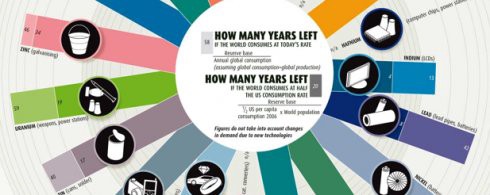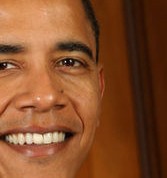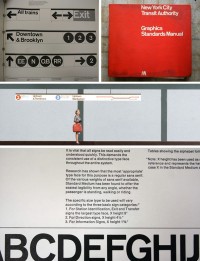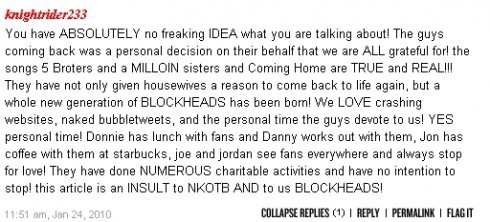Bad Dreams Will Mess You Up?
Are nightmares the brain’s way of venting its deepest anxieties to help relieve stress? Science seems to say yes, but even newer Science says not so fast! Recent studies show that “not only did nightmares not stave off anxiety, but people who reported being distressed about their dreams were even more likely to suffer from general anxiety than those who experienced an upsetting event such as the divorce of their parents.” One more thing to worry about, I guess.
How To Be Taken Hostage

Newsweek has some helpful suggestions, quite randomly presented in cartoon form, about dealing with being taken hostage by another person. I disagree with nearly all of these pro tips! Don’t be a hero? America loves heroes. It is anti-American not to be a hero. In fact, your life is meaningless without taking advantage of potential heroism. Let’s roll, people! Roll, that is, against the anti-American elitist traitors that run the liberal coastal mouthpiece that is Newsweek.
Solving The 'Sherlock Holmes' Dinosaur Deficit Problem
A couple of issues back Wired had a short piece on the Asylum,
a low-budget studio specializing in shamelessly derivative knockoffs that are not-so-affectionately dubbed “mockbusters.” B-movie producers have been cribbing from Hollywood for decades, but none have done so as brazenly or efficiently as the Asylum, which for the past six years has churned out titles like Snakes on a Train, Transmorphers, The Terminators, The Day the Earth Stopped, and, of course, last summer’s Transmorphers: Fall of Man.
Now Topless Robot points to the preview for their forthcoming version of Sherlock Holmes, which seems to be everything promised and more! Enjoy.
Waiting for the Apple Tablet, with Joel Johnson
by Joel Johnson

So the first thing you should know about the Apple Tablet is that I just bought a van. It’s creepy. Mary HK Choi hadn’t even seen a picture yet before she called me “shady.” This dashed my hopes of driving to New York and taking her from Maine to Florida, eating things covered in mayonnaise all the way.
The reason I bought the van is that even when I am in the process of wanting to drop out of society, “get back to nature,” etc., I can’t do it without spending $5K on a fuel-snorting machine. It’s what tech dorks do when we look at the world: try to find a thing to purchase through which to realize our fantasies.
With that in mind, consider what it’s like to be a technology writer, especially on the consumer side of the business. It’s not like we sit around trying to get people to buy things that they don’t need, but we’re sort of fundamentally part of the problem. I mean, we take some comfort in the fact that we ostensibly are steering people toward the best items for purchase, but, isn’t the world shaking itself apart? Aren’t we running out of oil and rare earth metals and kids in Liberia are smoking heroin and raping their neighbors and the entire civilization is ready to collapse?
Isn’t that happening? Or is it not? I don’t even know how to spell “tourniquet” without a computer.
But then there’s Apple, which, in the balance, is kind of a miracle. They don’t just make good products, but with the iPhone they actually pushed the whole industry ahead in profound ways. When you’re a tech writer that’s what you live for. It’s like if you were a fashion writer and there were really only one designer nailing it year after year. Maybe that’s what it is like in the fashion world now. I pretty much wear puffy vests and bib overalls now.
Has it been three years since the iPhone? Amazing. And in the interim what has been the facefuckingly awesome justification from the electronics industry for the use of all that oil and energy and natural resources? Some decent products, sure, but nothing amazing. Android phones? Okay, sure. The Kindle? I guess.
We all know deep down that this civilization is doomed. Or even if it isn’t, it should be from the way we abuse it. And since we all fundamentally believe in the myth of progress-which I hope to Christ is not a myth-just by dint of our Western upbringing, it’s the easiest thing in the world for us to project our hopes onto this upcoming Apple tablet. Because it doesn’t just represent the latest distracting widget, but at this moment in time, with no space program, with an auto industry that refuses to advance, with no cure for cancer, a lot of us are transposing our belief that science and technology will actually save our species from disease and hunger and death onto this literal blank slate.
It’s kind of beautiful, metaphorically.
Anyway, that’s why the tech dorks keep going on and on about it-and we just embody an extreme quality of a material culture. We wouldn’t have a job if no one cared. And I’m not even sure I even feel that guilty about it. We’re on this train together. Nobody is changing anything, apparently. We’re going to suck this planet dry like the bratty, brilliant teenagers we are. So if it takes a stupid computer company to inspire our scientists and show other companies how much money can be made from old fashioned competence then so be it. Meanwhile I will be figuring out how to tie half-hitch knots and playing crappy guitar covers in my van.
The van’s pretty awesome, by the way. I spent the night Saturday in a gully somewhere in the Siuslaw National Forest with my bulldog. Watching his genetically-ruined form gambol through the mud, like the back halves of two rhinos welded together with a manatee face loosely stapled to one end-that made it worth every penny.

Joel Johnson will totally give you a ride.
Reasons To Be Cheerful: I'll Let You Know When I Think Of Some

Was Barack Obama going to get hammered by the economy no matter what he did? Paul Krugman concedes that it’s possible. It certainly doesn’t help that many Americans are too stupid to understand the stimulus package. But don’t worry, now that unions are free to flood the airwaves with informative ads, things will be much clearer. Or, uh, not. We’re pretty much screwed. All of us, not just the gays. I hope the last season of “Lost” is good, because I can’t think of anything else to look forward to.
The True/Slant "Abuses Writers" Scandal!

Over the weekend a bunch of people hopped on to publicizing Oregon-based science writer (apparently not the proprietor of Very Media of the same name) David Appell’s claim that “True/Slant abuses writers.” (True/Slant is a centralized web-based writer-place, that engages writers for fairly low fees and sells advertising.) Appell signed up in November, for a fee of $200 a month-but was accidentally only paid $150 for December. He wrote the CEO-who did not respond to him! When other people in the company were alerted, they cut him a check for the remaining $50. But! AND THEN! They terminated their contract with him! “They’re a pretty slimy organization,” concluded Appell. Whyever (that’s not a word) would they have done such a thing?
We reached out to True/Slant’s executive director, Coates Bateman, with the following urgent, reportorial questions regarding this scandal.
Why, we asked, “did you fire that poor oppressed writer from his contract?” And also: “WHY DID YOU [okay, temporarily and accidentally] STEAL FIFTY DOLLARS FROM THAT POOR, NICE WRITER FELLOW?”
Bateman responded: “I regret the error I made regarding Mr. Appell’s December pay. I feel we did our best to remedy in a timely fashion.”
He added: “I don’t regret the decision of ending our business relationship.”
We Are All Blobfish

Will overfishing lead to the extinction of “the world’s most miserable-looking fish”? Experts say yes. I have no idea, personally, I just wanted to put this picture up. Look at that blobfish! Does he not share exactly the expression you’ve made several times already today? Or is your mood more like this?
Sympathy for the Tea Party

I have a weird thing about the Tea Party type of people, in that, while I don’t think the Jews are running black helicopters from NATO down the Mississippi nor do I think Obama is “sekret Muslin usurper President of Kenya,” I do actually find it exciting that there are pissed-off bands of people in this country-and I don’t believe they’re all astroturfed and I do think a great deal of Tea Party members have come to the tea party organically and with some not-terrible complaints, particularly those about the disinvolvement of Americans from politics. The problem is so many of them go awry with the whole birther crowd, and also that, like many of us, they have few reliable sources of information and so they spend their days printing out copies of blog posts garned from the crazy-net. That’s a shame, because a loud movement actually working towards the goal of a smaller, lest-wasteful, more accountable government would be awesome. And it’s also a shame because the Tea Party associates, as demonstrated in today’s Ben McGrath story in the New Yorker, are much closer to us than we think. They aren’t some weird far-off critters: they are, actually, our families and our neighbors and our friends-of-friends, as McGrath shows.
The Soros grumbler, who had also labelled John McCain a Communist, was dressed in jeans pulled up well above his waist with suspenders, and wearing thick, oversized shades. When he saw my notebook, he turned to Seely and asked, “Where’s he from, supposedly?” Informed that I live in New York, he replied, “There’s a nightmare right there.” What he had in mind was not a concentration of godless liberals, as it turned out, but something more troubling. “Major earthquake faults,” he said. “It’s hard in spots, but basically it’s like a bag of bricks.” Some more discussion revolved around a super-volcano in Yellowstone (“It’ll fry Denver and Salt Lake at the same time”) and the dire geological forecasts of Edgar Cayce, the so-called Sleeping Prophet, which involved the sudden emergence of coastlines in what, for the time being, is known as the Midwest. I asked the man his name. “T. J. Randall,” he said. “That’s not my real name, but that’s the one I’m using.”
Seely saw our encounter with the doomsayer more charitably than Hofstadter might have. “That’s an example of an intelligent person who’s not quite got it all together,” he said. “You can tell that. But he’s pretty interesting to talk to.” Seely’s own reaction, upon learning where I’d come from, had been to ask if I was familiar with the New School, in Greenwich Village. His youngest daughter, Amber, had gone there.
I asked Seely what Amber thought of the Tea Party. “We kind of hit a happy medium where we don’t discuss certain things,” he said, and added that at the moment Amber, who now works for a nonprofit that builds affordable housing in New Orleans, was visiting his son, Denver, who is enrolled in a Ph.D. program in mechanical engineering at Mississippi State.
Bob Noorda And The Best Sort Of Boredom
Bob Noorda And The Best Sort Of Boredom

Graphic Designer Bob Noorda died two weeks ago in Italy. He was 82, and, as the Times notes, he “helped introduce a Modernist look to advertising posters, corporate logos and, in the 1960s, the entire New York City subway system.” When you consider how ubiquitous and helpful the MTA’s color-coded Helvetica signage and maps are, not to mention all the knock-off t-shirts sold on St. Marks, and, now, the custom-made signs available for personal use, Noorda goes down with folks like Milton “I Heart NY” Glaser or Louis B. Tiffany-who designed the interlocking “N” and “Y” that would become the Yankee’s logo, in 1877, originally as a medal of honor for the first NYPD cop shot on duty, an officer named John McDowell (that’s interesting!)-as a giant of the city’s visual history.
Of course, considering something as ubiquitous and utilitarian as subway signage might be considered very boring. But only in the best way. Also in the Times yesterday, in the Book Review section, was an article by Jennifer Schuessler about the subject of boredom in literature. The article had a terrible title, Our Boredom Ourselves. (No one should ever use an “Our [Noun], Ourselves” title again. Also, even more importantly, “[Name] Is Ready For [His/Her/Its/Their] Close-up.”) And it should have mentioned Nicholson Baker’s wonderful novel, The Mezzanine, which is about nothing more than an office worker’s trip downstairs to pick up a sandwich and back, with a stop in the bathroom, and is somehow mesmerizing. But Schuessler did include a nice description of tedium from The Pale King, David Foster Wallace’s unfinished novel about “the inner-lives of number-crunching I.R.S. agents,” which Little, Brown and Company will publish next year. And these lovely thoughts from a note Wallace left with the manuscript:
Bliss-a second-by-second joy and gratitude at the gift of being alive, conscious-lies on the other side of crushing, crushing boredom. Pay close attention to the most tedious thing you can find (Tax Returns, Televised Golf) and, in waves, a boredom like you’ve never known will wash over you and just about kill you. Ride these out, and it’s like stepping from black and white into color. Like water after days in the desert. Instant bliss in every atom.
Is that bliss like the enlightenment Buddhist monks are going for when they sit and think of nothing for ten hours at a time? Or rake the same pebble garden all day, every day, over and over and over again? (Gavin Rossdale doesn’t think so. Van Morrison doesn’t know.)
Either way, it’s probably something a guy like Bob Noorda could have related to. The obsession with minutia that will have graphic designers arguing the comparative strengths of various typeface til the wee hours of the morning must open up into that same kind of rapture. Certainly, one hopes it does, for their sake. In his exhaustive 2008 essay, The (Mostly) True Story of Helvetica and the New York City Subway, calligrapher, typographer and New York historian Paul Shaw goes way, way deep into the work Noorda and his colleagues did for the MTA, exposing important truth behind the typeface. Or at least, truth.
There is a commonly held belief that Helvetica is the signage typeface of the New York City subway system, a belief reinforced by Helvetica, Gary Hustwit’s popular 2007 documentary about the typeface. But it is not true-or rather, it is only somewhat true. Helvetica is the official typeface of the MTA today, but it was not the typeface specified by Unimark International when it created a new signage system at the end of the 1960s. Why was Helvetica not chosen originally? What was chosen in its place? Why is Helvetica used now, and when did the changeover occur? To answer those questions this essay explores several important histories: of the New York City subway system, transportation signage in the 1960s, Unimark International and, of course, Helvetica. These four strands are woven together, over nine pages, to tell a story that ultimately transcends the simple issue of Helvetica and the subway.
Shaw writes about interesting things like how a simple misunderstanding at a print shop led to the thick line that tops the lettering of subway signs (it was originally meant to represent an encasing frame) and how the original black-on-white signs changed to white-on-black (defense against grime and graffiti) and how Noorda and his design firm Unimark originally chose Standard Medium, not Helvetica, to be the official MTA typeface in 1966-a decision based on careful, and probably very tedious, process.
Noorda spent three weeks as a ‘mole’ tracking the paths of commuters in these stations to find the essential message points-entering/exiting, transferring-for each sign. He plotted decision points on a tree diagram. And, as in Milan, he viewed signs in perspective to test their legibility.
In 1970, Unimark released The New York City Transit Authority Graphic Standards Manual.
Research has shown that the most ‘appropriate’ typeface for this purpose is a regular sans serif. Of the various weights of sans serif available, Standard Medium has been found to offer the easiest legibility from any angle, whether the passenger is standing, walking or riding.
“It was an incredibly courageous thing to do at a time when Helvetica was riding high,” said Shaw, in a 2008 interview with the Times. I love that, the thought that a choice of typeface might be considered “incredibly courageous.”
The switch from Standard Medium to Helvetica took place in the 1980s. Apparently the result of technological advances. As Shaw writes:
The 1989 MTA Manual listed the following equipment: digital type (Linotronic), phototype (Compugraphic and typositor), tape-based lettering systems (Kroy and Merlin), computer-driven letter- and stencil-cutting systems (Gerber Signmaker), vinyl self-adhesive letters (from various manufacturers) and fabricated or cut-out letters in plastic and other materials. The only typeface that was available on all of these systems and methods was Helvetica.
After reading Shaw’s essay, I’m not sure I’d use agree that it “transcends” the subject of subway sign typeface. I can’t honestly say that all nine pages had me enrapt (you may very well be feeling the same way about this post!) But I love his passion. And that of other design geeks-in fact, of all geeks everywhere. The comments at the design site Aiga, which published Shaw’s article, are glowing and terrific. And heartwarming.
Says a commenter named Friends: “I really can’t get enough articles on typography. This is great-thanks, Paul Shaw.”
Crazy New Kids On The Block Crazies Go Crazy

DO NOT call fans of New Kids on the Block “digital groupies.” Unless you want to get them riled up. In which case, put it right in the headline. They go crazy about that stuff.
